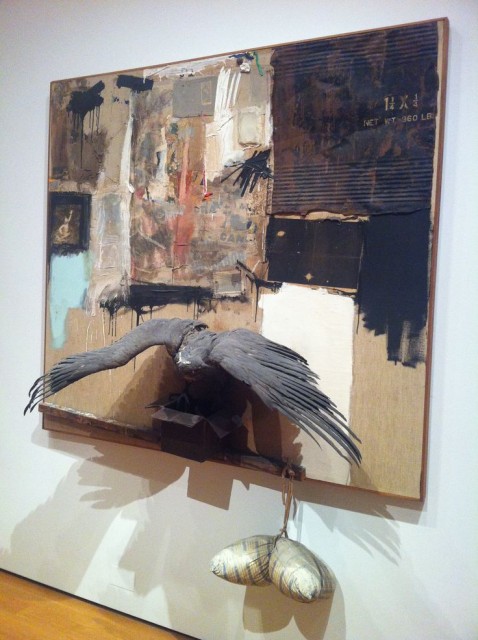The Art Advisory Panel
03/29/2017 General

Briefly Legal is a monthly column in DOYLE Notebook. It is contributed by Lindsey Friedman, Esq. of Doyle’s Estate and Appraisal Services Department. Briefly Legal profiles current stories in the news and focuses on topics related to art law, estate planning and fiduciary practice.
The Art Advisory Panel of the Commissioner of Internal Revenue was created in 1968 in order to advise and assist the IRS in reviewing the acceptability of fair market value appraisals of tangible personal property submitted by taxpayers for income, estate and gift tax purposes. If a taxpayer's return is selected for audit and contains an appraisal of a work of art valued at $50,000 or more, the IRS must then refer the case to their Art Appraisal Services unit in the Office of Appeals for possible referral to the Art Advisory Panel. Works of art include paintings, drawings, prints, sculptures, ceramics, decorative arts, textiles, carpets, silver, rare manuscripts, antiquities, ethnographic art, collectibles, automobiles and historic memorabilia. Jewelry is not included in the definition of artwork outlined in Internal Revenue Manual §4.48.2.2.
The Panel is composed of approximately 25 art experts made up of museum directors, curators, scholars, art dealers, auction representatives and appraisers. The Panel generally meets twice per year in a closed meeting to protect the confidentiality of the taxpayers and tax returns. The art experts on the Panel meet voluntarily, without compensation, and they are not informed of the taxpayer’s name, the type of tax return, the tax consequences of any adjustments to the value, or who appraised the artwork. The works are also examined in alphabetical order by artist name or object type, in order to further protect against a panelist recognizing a taxpayer’s entire collection. If a conflict does exist, the panelist is excused from reviewing the work during the meeting.
Prior to each meeting, the Panel is given photographs of the work and relevant documentation, such as size, medium, physical condition, provenance, comparable sales and the appraised value submitted by the taxpayer. The Art Appraisal Services staff also includes their own research for review. The panelists examine all of the information and then come to an agreement on the value of each work. They may also request additional research or an inspection of the property if they are not able to come to a conclusion. The Panel will then recommend whether the value presented in the taxpayer’s appraisal is acceptable or if they feel that an alternate value is more appropriate. The recommendations are advisory; however they generally become the position of the IRS after review by Art Appraisal Services. According to the Annual Summary Report for Fiscal Year 2015, the Service approved 74% of the Panel’s recommendations.
Furthermore, the Annual Summary Report states that the Panel reviewed 446 works of art in 2015 with an aggregate taxpayer valuation of $649,296,221 on 59 cases. The Panel recommended that 156 appraisals, or 35% of the values, be accepted by the IRS, and that 290 valuations, or 65%, be adjusted. On those works that were recommended for adjustment, the panelists recommended a total 18% increase in value.
A challenge facing taxpayers and their valuations was highlighted with the Estate of Ileana Sonnabend. Robert Rauschenberg’s 1959 work entitled Canyon, a mixed media piece containing a stuffed bald eagle, was included in Sonnabend’s estate and was initially valued at zero by several qualified appraisers. The appraisers deemed the work to have no fair market value since bald eagles are protected under federal laws and cannot be legally sold. However, after Sonnabend died in 2007, the Art Advisory Panel determined that the work should be valued at $65 million, with an estate tax deficiency of $29 million. The IRS explained that while Canyon could not be sold legally, there are markets for illegal goods and the piece still has artistic value. The case was eventually settled after the IRS agreed that no estate tax would be assessed if the work were to be donated to a museum and the estate were to agree not to claim a charitable deduction for the donation. Canyon is now in the permanent collection of the Museum of Modern Art in New York.
Similarly, in December 2015, the Tax Court challenged the appraisal of Pablo Picasso’s Tête de Femme in the case, Estate of Newberger v. Commissioner, T.C. Memo 2015-246. Bernice Newberger died in July 2009, when the art market was still experiencing a decline in sale prices, and the estate had an appraised date of death value of the work at $5 million for estate tax purposes based on comparable sales. The estate later agreed to sell the work in December 2009 at a London auction, where it realized $12 million; however they filed the appraisal of $5 million with its estate tax return. In 2013, the IRS issued a notice of deficiency and claimed that the Picasso should be valued at $10 million. The estate argued that the sale price was a “fluke” and could not have been anticipated due to the depressed state of the art market at the date of death. The court determined that the failure of the estate to consider the sale of the Picasso in its valuation as “wholly unreliable” and the sale should be taken into account as evidence of fair market value. Thus, the court accepted the IRS’ date-of-death valuation of $10 million.
SOURCES:
Slugg, Ramsay H. Handbook of Practical Planning for Art Collectors and Their Advisors. American Baar Association, 2015.
https://www.irs.gov/pub/irs-utl/art_adv_panel_annual_summary_report_fy15.pdf
https://www.irs.gov/irm/part4/irm_04-048-002.html
http://www.barrons.com/articles/how-art-can-blow-apart-your-estate-1466222381
http://www.investmentnews.com/article/20160211/FREE/160219978/art-and-death-taxes-not-so-certain
http://www.wealthmanagement.com/valuations/ups-and-downs-estate-valuations-artwork
https://www.ustaxcourt.gov/UstcInOp/OpinionViewer.aspx?ID=10646
http://www.law.com/sites/amyfaltman/2014/05/12/art-law-part-1-from-eagles-to-ivory-the-art-of-lost-value/